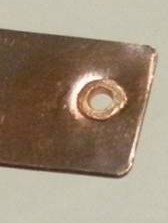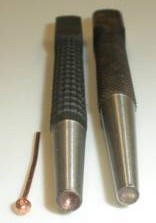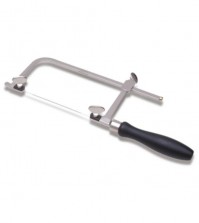- NEW DVD Series – Stone Setting with Bezels
- Tube Set Charm by Kim St. Jean
- Prong Basket Pendant by Kim St. Jean
- NEW DVD Series – Stone Setting with Cold Connections
- New DVD Series – Stone Setting with Wire
- NEW DVD Series: Introduction to Stone Setting by Kim St. Jean
- Featured Tool: Bracelet Bending Plier
- NEW Dvd by Eva Sherman
- Fun, Fast Fold Forming DVD Series
- Double Band Ear Cuff from Alex Simkin
Daily Wire Tip Sept. 19: Adhesive for Ivory
Daily Wire Jewelry Making Tip
September 19, 2009
Question:
I have an ivory piece that has broken. Can you recommend an adhesive that will not damage the ivory?
Answer:
For accurate answers to certain questions I often turn to my jewelry making peers and associates. For the correct answer to this query I asked Scrimshaw artist Mary Bailey and her blade-maker husband Joe, of Nashville, TN. The following is their very informative response:
Okay, first off we both know that this is too general when referring to `ivory piece` since we have no idea if it is a carved pendant piece, a statue, a bead, a tusk, etc. Because of this, we will have to go with the assumption that maybe it is a broken pendant piece. (Repairing a statue can involve having to actually drill and set holding pins before gluing.)
Ivory is a natural material and as such `breathes`, meaning that it reacts with the environment around it. It will absorb moisture from the air in a high humidity environment and as equally, will suffer from a very dry environment. Changes between the two can affect ivory drastically simply because the absorbing and then drying causes the ivory to swell and shrink, resulting in cracking.
If you collect ivory pieces, keep them in a curio cabinet in what becomes a stable environment and place a small saucer with water dipped cotton balls in it. Check the saucer occasionally to check the status of the cotton balls. If they are still wet, then the ivory has absorbed all it needs, if the balls are dry, then your ivory is very dry and is seeking the moisture it needs, so replace the cotton balls with wet ones. Do not store ivory pieces in direct sunlight since anything left in direct sunlight heats up after long exposure and then cools down creating another classic chance of cracking. Leaving ivory pieces in areas where a fireplace or wood stove is used creates the same problems.
1. Clean the broken area edges using a cotton ball with a small amount of rubbing alcohol on it to remove any oils that may be present on the ivory. This is normally human body oil and as such it will affect the adhesive being used for repairing. (Human body oil is what adds to the patina of aging ivory giving it that yellow cast that brings out the grains in the ivory.)
2. Once well cleaned and air-dried, you can use super glue to put the pieces back together. Don`t worry about excess glue seeping out between the joint sections. Once it sets, the extra glue can be removed by using acetone to remove the glue. (I`d suggest using a q-tip dipped in acetone to gently wipe off the excess glue from the surface.)
3. When completely dry and sealed, if this is a piece that is going to be wire wrapped, the outer wire border should help reinforce the rejoined pieces and keep it stable.
Hope this answers the question. Mary and Joe
Answer contributed by Dale `Cougar` Armstrong























Laurel
September 19, 2009 at 11:02 am
Wow, what a wonderful tip!! I have some small ivory pieces that are in a curio, but did not know about ivory needing moisture.
Thanks very much!
Laurel